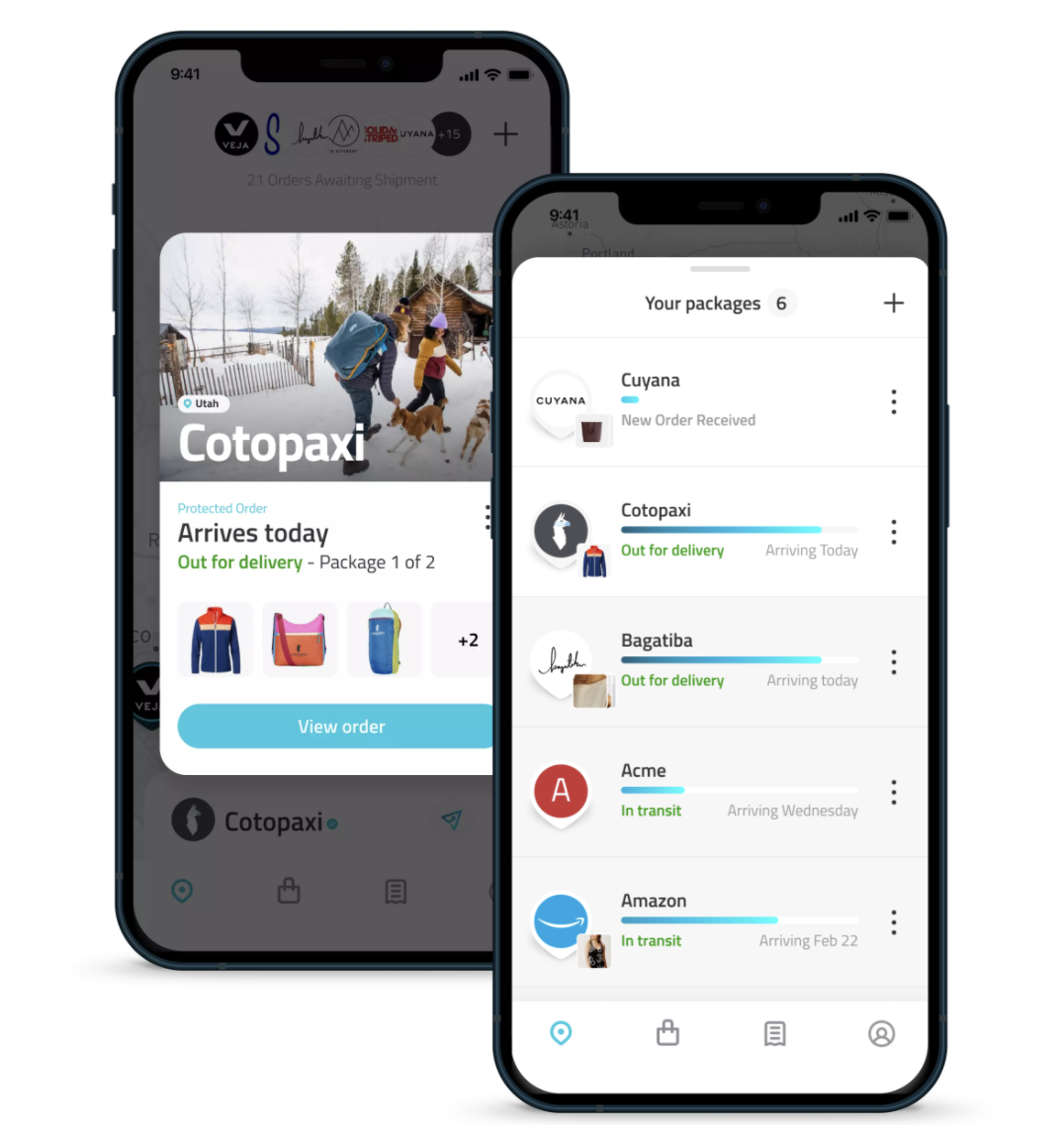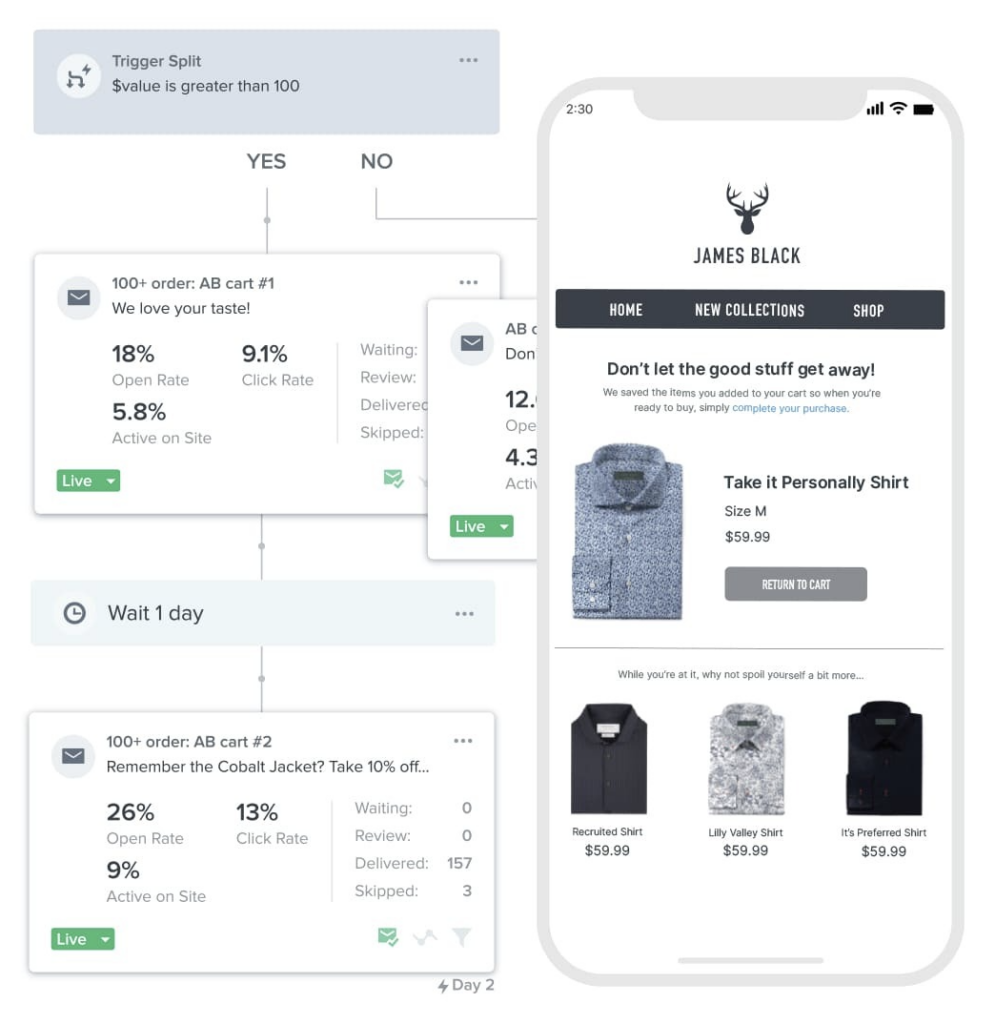Every brand spends at least some time thinking about the customer journey. How do we get in front of our customers? How do we get shoppers interested in our products? How can we get people to purchase? How do we bring our dreams to life using ecommerce?
Questions about selling more stuff endlessly spin around the minds of merchants, but what do sellers think about after shoppers have (finally!) hit the buy button? Too often, brands just ship off a product and leave the last-mile experience in the hands of the carrier. But when things happen during deliver—loss, theft, damage, acts of God, stuck ships—sellers wish they had spent a few extra moments thinking about the post-purchase part of the customer journey.
This guide will focus on why the post-purchase experience (PPX) is important and how to improve this often lackluster experience so customers keep happy and sellers scale big.
Within this guide, you’ll find:
- An overview of the customer journey
- The problems with the post-purchase experience today
- The impact on ecommerce merchants that ignore PPX
- Solutions to create a better PPX
An Overview of the Customer Journey
For brands just beginning to decide how to maximize each stage of the customer journey, it’s important to understand what exactly goes into each stage. Odds are good that every merchant is a consumer in some way or another, so sometimes this customer empathy comes from just examining your own wants and needs as a shopper. Either way, understanding the phases of customership is critical on your way to optimizing the journey from product discovery to delivery.

Pre-purchase: This is the stage of the funnel that occurs before the customer hits the buy button. They discover your brand, research your products, comb through reviews, and decide whether or not they want to purchase.
Purchase (or Conversion): This may sound like an easy one, but don’t gloss over it! It’s not just about clicking “buy” on the product detail page. This is the full scope of the purchase page. Your site should allow the customer to save their information for next time to speed up the process and enable multiple payment methods, such as credit card, PayPal, and Apple|Pay, as well as Buy Now Pay Later financing options. Transparency in price and shipping options is also key!
Post-purchase: Everything that comes after the checkout — sending a confirmation email, shipping the product, tracking the package, the unboxing — all of this is a critical part of the experience. It shows customers that they aren’t being forgotten after they’ve converted. This is also the final stage that can make or break their decision to return.
Problems with the Post-Purchase Experience Today
The PPX is easily the most overlooked portion of the customer journey. Brands will too often completely abandon their customers after they’ve hit “buy.” They send off the product to the carrier and wipe their hands clean. In fact, 80% of ecommerce budgets are dedicated to customer acquisition.
While loads of new customers seems like a great thing, this isn’t the best way to budget for long-term scaling and loyalty. There are so many more opportunities for personalized and authentic brand engagement during the PPX, so it’s always wise to save a piece of the budget for post-checkout. Not only are there opportunities for you to engage your customers, but customers won’t feel as though you’ve abandoned them as soon as they give you their money.
Plus, overseeing this final phase and providing a bad PPX can create a negative and frustrating experience when customers are deciding whether to come back. (Heads up! Most won’t return after a bad post-purchase experience.)
Currently, most PPXs don’t align with modern customer needs, wants, expectations, or behaviors. Customers want the white glove experience from a brand, especially when they buy online and are taking more of a chance on your products versus the hands-on experience of purchasing in-store. Clunky tracking numbers, poor unboxing experiences, a lack of communication, and complicated issue resolution during the PPX can tarnish trust and create a bad experience.
Ecommerce is continuously evolving, and unfortunately much of that evolution up until now has been entirely focused on the pre-purchase and purchase stages of the customer journey. The post-purchase experience has remained the same — digging through emails to find tracking numbers, plugging those numbers into the carrier’s website, and a poorly designed tracking page that only gives vague details of when package ETAs make up some of the outdated factors still plaguing ecommerce.
Brands need to flesh out the entire customer journey if they want to continue to win customers back.
The Impact of Ignoring the Post-purchase Experience
We hear this all the time — why should your store care about the part of the customer experience that occurs after the money’s already been forked over? Brands often don’t see the value in creating a better PPX since there’s no “extra” revenue to be instantly generated from the effort. However, there are both valuable opportunities that directly contribute to your revenue when you do have a good PPX and detriments when you don’t.
On the positive side, having a conscientious and engaging PPX will lead to increased differentiation on the digital shelf. Your shopping experience will stand out by comparison and attract more customers—better search rank, better conversion rates, better reviews, you name it and PPX can help you hit those goals. Today’s consumers are making more purchase decisions based on the experience, and when your store stands out with a better time, people will notice.
Your customer lifetime value (CLV) will also increase as well as your repeat customer rate. By providing the best shopping experiences, you’ll be more likely to get your customers to come back and shop again. This is huge because brands that thrive for the long haul emphasize scaling instead of short, unsustainable bursts of growth.
This is because repeat customers are 50% more likely to try new products and spend 31% more money than new customers. Plus, with more return customers, merchants can create well-forecasted plans thanks to the predictability of their scaling rates. A poor final step in the customer journey can flush the hard work that acquired that customer down the drain and lose out on the revenue they would create if they came back.
A great PPX will also help you build a better reputation. As the final touch between your brand and a customer in a purchase cycle, delivery becomes the most memorable. Positive word of mouth, reviews, and community marketing will be much easier if your customers love the experience of shopping with you. This is one of the best ways to acquire new customers, and your current customers will do a lot of the work for you!
But on the catastrophic side of the coin, a poor PPX can be detrimental to your brand. An absent or disengaging PPX makes it more likely that your customers will leave a bad review—and if ecommerce sites know one thing, it’s that poor reviews can be fatal to a brand. Why have the final moments of their shopping experience be a bad one?
Even worse than a bad review, your customers will be more likely to churn (for good ☠️). Passive customers will be more likely to desert a brand and start shopping with your competitors, and even once-loyal fans could be turned away after getting burned by a bad PPX one too many times.
What’s worse is that your PPX doesn’t even have to have that many dull spots. If a loyal customer happens to have a lost package on their 10th order, they’ll feel extra heartburn if your support team doesn’t help them after all they’ve spent with you. If you don’t wow them with your experience, they’ll quickly bounce to other brands simply because you weren’t that memorable, caring, helpful, or supportive in their time of need.
Finally, all of this adds up to mean that brands that ignore their PPX will limit their scalability. If you are battling poor reviews and have few returning customers, you won’t be able to grow. And soon, even new customer count could start to dwindle because of that sour reputation.
5 Strategies for Setting up a Better Post-Purchase Experience
Now it’s time for the meat and potatoes of this here guide—the barebones tips and tactics for making an optimized PPX a reality. Below are five straightforward and easily implemented strategies that any brand can embrace to create a better PPX.
1. Provide Peace of Mind
Pre-parcel anxiety is a thing. It’s the stress that shoppers experience after they hit “Buy,” hand over all their details and dollars, and wait for their package to arrive. It’s caused, ultimately, by feeling ownership of something but not having it in your physical possession. It’s an anxiety that can only be cured by finally getting your purchases home safe and sound.

However, with clear, simple package tracking solutions, you can reduce this anxiety while simultaneously slashing the number of WISMO (Where is my order?) questions your support team fields. Visual tracking coupled with real-time notifications about a purchase’s status quell worries. They also will reduce the cost of your customer service function and provide a better experience than customers rifling through their email to find a tracking email and plug those numbers into a third-party carrier’s site.
Route Track is one way to provide a seamless tracking experience the moment after someone purchases. Empower customers to seek their own peace of mind by giving them a place to check their package status as often as they want, connect with support if they need, and engage with your brand the entire way.
2. Keep Communicating
The last thing you want to do is ghost your customers right after conversion. Instead, keep communicating with them to strengthen trust and transparency through a variety of channels. Send them a message with their order confirmation, when their tracking number is created, when their order is in the mail, when it will arrive, and when it does arrive.
Whether you opt for push notifications, text messages, emails, or more, your customers will feel just a bit more at ease until their package reaches its destination. Constant reminders about when it will come will keep your customers worry-free and excitedly awaiting their goodies. Plus, customers will get a taste for the engagement and genuine care shown by your store, which is pretty hard to come by in the shopping world.
3. Automate When Possible

Don’t make it a heavy lift for your team to get these updates out, either. Automating the workflow with smart communication sequences (with whatever channel or channels are a part of the communication strategy) will save you time and money. This will enable you to spend less time manually sending communications on your end and fewer calls to customer service on your customer’s end.
An additional benefit of automation is that it can also increase the engagement that gets your brand in front of customers even more. You’ll have more opportunities for cross-selling through automated emails, retargeting ads, and other channels, which means more revenue opportunities for your brand. While automation could mean adding a platform to your tech stack—for example, Klaviyo and Mailchimp are popular marketing automation tools for extensive workflows—starting with simple automations included in tools like Route are a great place to start.
4. Show Empathy to Customers
It may seem obvious, but empathizing with your customers is a strategy that resonates deeply with them and costs absolutely nothing. It’s just a fact that not all experiences will go smoothly—packages can get lost, stolen, or broken en route. But showing empathy for customers who might feel sad or frustrated when those things happen can go a long way.
Part of showing you understand and care is making the customer support process as easy as possible. Returns and refunds should be as simple as a click of a button instead of long wait times or bot-chat purgatory. A never-ending struggle to resolve an issue will ensure a customer churns every time.
Additionally, this is a great opportunity to ask for feedback and actually act on it. You can understand the customers’ needs and create a process that aligns with them. There’s nothing customers hate more than being ignored in their concerns. If you spot a pattern of negative experiences in the PPX, act! Route Protect is an easy addition to any post-purchase experience that will automatically process claims and give customer near-instant resolution.
5. Protect Purchases
This strategy, at this point in ecommerce history, is table stakes. Package protection and shipping insurance is an easy way to let your customers know that you have their back even after they’ve spent their money. As ecommerce grows and package theft rises, this couldn’t be more relevant. Insurance is an extra touch that modern customers need to feel safe when they’re ordering online.
Weaving package protection into your post-purchase experience gives shoppers confidence at checkout and creates memorable moments that drive loyalty and revenue.
Step up your store’s post-purchase strategies and stand out from the competition
The PPX is a too-often-ignored stage of the customer journey. Ecommerce stores have historically spent so much time and money attracting customers’ attention and convincing them to buy that everything past purchase has stayed stagnant and outdated.
However, the tides have shifted and consumer behavior is no longer just about flashy ads or gimmicks or slashed prices. Instead, consumer decisions are increasingly made on the experience a brand can offer—so much so, that they’re even willing to pay more for a better experience.
Adding these five simple strategies to your ecommerce marketing playbook is a sure-fire way to earn loyalty, up retention, and leave a lasting impression on every shopper who discovers your brand.